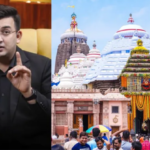Indian fashion industry is in shambles; workers scramble to make ends meet
Mumabi, July 26: With retailers and clothing units shutting shop, and millions of workers scrambling to make ends meet, nobody frankly knows the future of fashion. Experts say need-based sustainable fashion will rule.
The coronavirus crisis has crumpled the social fabric of our lives and the fashion industry like. Be it the way we address our financial goals or the way we dress.
Even as fashion titans like Louis Vuitton, Prada, Gucci and some Indian designers are casting their bread upon the waters to create safe and sustainable clothing (including PPE), the most that we can do is wait. And watch!
Fashion historians point out that people changed their dressing style after the 1918 Flu Pandemic, the Great Depression and World War II. The 2020 Covid-19 pandemic is no exception.
With retailers and clothing units shutting shop, and millions of workers scrambling to make ends meet, nobody frankly knows the future of fashion or the new ‘quarantrends’.
Some designers say dressier days are on the horizon as people would want to spread cheer and positive vibes. Some opine dull and somber attire goes with the current mood. Yet, a few others are optimistic of the easy-on-the-eye-and-pocket florals.
The online market of second-hand and recycled clothes, shoes and accessories has already seen a spike. You may nod and naff in equal measure, but it looks like Back to Basics!
Ritu Kumar, the doyenne of Indian fashion industry, who began her career in 1969 with just four hand block printers and two tables in a small village near Calcutta (now Kolkata), says that there were recessionary trends in the fashion industry even before the pandemic.
“Business had slowed down after demonetisation. Now, there will be a trend of need-based buying. I won’t be surprised if we are pushed back by another 20 years,” says Kumar, whose understanding of ancient Indian designs, traditional crafts and Indian fashion market is unmatched.
She adds that you cannot compare the Indian fashion industry to the international ones. “The fashion industry in the western world has been there for over 100-150 years. The Indian fashion industry has been around for only 30-40 years.”
However, Kumar feels the saree, kurta and kurtis will make a comeback to beat the corona blues. “A saree suits all occasions. It is low on maintenance too. Men usually spend on branded shirts and trousers. But now people will move towards ethnic wear. The kurta will be the much-favoured choice for men and women,” she says.
Beleaguered Workforce
India has an estimated 16 million crafts-people working in the textile industry. A majority of them in rural areas and are involved in the most intricate work like weaving, embroidery and creation of embellishments etc.
These craftsmen have mastered their craft over centuries and passed it on from one generation to the other. The pandemic has brought about an “unprecedented” crisis.
Today, thousands of craftsmen are without work. Customers are still hesitant to enter malls and shops to buy clothes although there has been a spike in online shopping.
Jugnu Gosrani, a Mumbai-based designer, who creates free-spirited clothes, says all her sales are online.
“We are all saddled with unsold merchandise. This month, I managed to sell kurtis, dresses and skirts online in my housing society itself. Customers order online. I leave the outfit outside their door in a sealed plastic bag,” explains Jugnu. She is certain that people will stick to affordable and sustainable clothes.
The only ‘In thing’ right now are protective masks. Jeans, joggers and leggings are also in demand. Whether you step out to run errands or go for a jog. The mask is here to stay for a long time. “I’m making kalamkari masks from the leftover fabrics,” Jugnu adds.
No Big Spenders
Designer Rina Dhaka feels it is impossible to quantify the losses since it is interlinked from retail giants to exporters to the migrant workers. “Work is a struggle and one is trying to get up again,” she says.
After the pandemic, Rina plans to move back to crafts, wovens and sustainable models of fashion. “I will also simplify the couture. Maybe more as singles or separates to make the spending easier,” she says.
Grapevine from the fashion circuit tells us that nearly four designers and their loved ones have had a close brush with the virus. Earlier, designers had to run the gauntlet of TV cameras and fashion photographers.
Now, it will take plenty of pluck to re-fashion one’s business model and pull through the mess. The Fashion Design Council of India has already announced a Covid-19 Support Fund for small businesses and young designers in need.
Ritu Kumar is certain that fast fashion will be out. “In India, people purchase clothes for functions and festivals (Diwali, Eid, Christmas, Baisakhi) unlike the west where the fashion ramp is dictated by changing seasons and colours.” Kumar is optimistic that people will bounce back. “We will have to focus on ‘Make in India’ to pull through this crisis,” she says.
Make Every Outfit Count
Today, millions of people are either out of work or have taken pay cuts. The recession has forced people to set their priorities and rethink their spending. Nishit Gupta, director of KALKI says people are tired of this panic mode.
“Fashion trends will vary as the world slowly emerges from the global quarantine. With weddings now becoming more intimate, smaller in size, the fusion trends will find favour with both brides and bridesmaids. Mirror lehengas, organza skirts, pre-stitched sarees, necklet gowns, dhoti-crop tops in handwoven fabrics and hand-done embroideries with traditional textile techniques will trend. It will also help support the rural artisans and handloom communities,” says Nishit.
The pandemic shockwaves have hit every industry. The ‘new normal’ will make us slow down, and reinvent how we view consumption and production.
“If you view forecasts, by next year from a slated -4% drop this year in the GDP, we may be able to achieve a growth of 4% in 2021, provided we take control of the production and job creation by being self sufficient,” says Bahaar Dhawan Rohatgi, a Delhi-based lawyer-cum-visual artist and influencer.
She hopes the fashion sector will become more responsible and sustainable.
“I hope aficionados will promote products that employ environmental-friendly, fair practices, minimise waste and boast functionality. We may witness a tipping point where designers will be drawn to celebrate austerity, emphasising a classless society (remember post war ‘Austerity Britain drive’ in the 1940s) signifying affordability, access to leisure, health, value life and maintaining balance,” says Bahaar. Perhaps need-based sustainable dressing is the glamour we’ve been missing!
Source: The Asian Age






